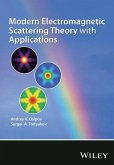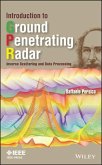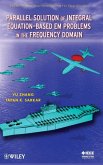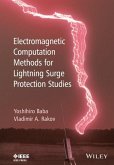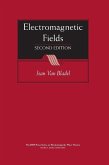This book offers the latest in the parallel solution of integral equations for both in-core and out-of-core modes. User-friendly computer code is provided, with a strong and unique capability for solving challenging electromagnetic field problems consisting of complex material structures. The content also provides parallel programming techniques that make MoM (Method of Moments) a useful software and more accessible to antenna and microwave designers who need a fast simulation tool. This code both supports classroom education and helps practicing engineers develop new versatile products.
The latest in parallel EM solutions with both in-core and out-of-core solvers
The solution of complex electromagnetic (EM) problems requires one to address the issues related with numerical accuracy and efficient distribution of the solution procedure over multiple computational nodes. With the advent of multicore processors and high performance computing (HPC) technology, the EM software designers need to know how to add new functionality to computational EM codes so that they can run efficiently on these new processors.
Higher Order Basis Based Integral Equation Solver [HOBBIES] presents a road map for the analysis of complex material structures using the high-performance parallel simulation software known as HOBBIES. Focusing on the Method of Moments (MoM), the book features new parallel programming techniques and user-friendly code with superior capabilities for solving challenging EM radiation and scattering problems. It provides readers with complete guidance on how to extend the capability of MoM and achieve faster and more accurate EM analysis and utilize multicore CPUs on desktop computers. Complete with an academic version of the HOBBIES software, this book:
Explains the unique features of the higher order basis functions in the solution of integral equations in a MoM context
Shows how to generate a properly load balanced parallel computational procedure for MoM matrix filling and matrix equation solving in both in-core and out-of-core implementation
Presents a professional graphical users interface (GUI) for generating the geometrical structure based on NURBS modeling
Illustrates various automatic meshing procedures based on an a-priori defined error between the actual geometry and the meshed structure
Outlines all the key features of the HOBBIES software, including multiple optimization procedures for EM synthesis
The bottleneck of traditional MoM arises from the lack of memory in computers for solution of large problems. This is mitigated by using higher order basis functions and out-of-core solver in HOBBIES. HOBBIES has the capability to perform numerically accurate EM simulations using thousands of CPU cores in an HPC environment using a properly load balanced out-of-core solver. In this way, it provides a cost-effective choice for addressing modern engineering and scientific challenges that arise from the extremely complicated real-life applications.
The latest in parallel EM solutions with both in-core and out-of-core solvers
The solution of complex electromagnetic (EM) problems requires one to address the issues related with numerical accuracy and efficient distribution of the solution procedure over multiple computational nodes. With the advent of multicore processors and high performance computing (HPC) technology, the EM software designers need to know how to add new functionality to computational EM codes so that they can run efficiently on these new processors.
Higher Order Basis Based Integral Equation Solver [HOBBIES] presents a road map for the analysis of complex material structures using the high-performance parallel simulation software known as HOBBIES. Focusing on the Method of Moments (MoM), the book features new parallel programming techniques and user-friendly code with superior capabilities for solving challenging EM radiation and scattering problems. It provides readers with complete guidance on how to extend the capability of MoM and achieve faster and more accurate EM analysis and utilize multicore CPUs on desktop computers. Complete with an academic version of the HOBBIES software, this book:
Explains the unique features of the higher order basis functions in the solution of integral equations in a MoM context
Shows how to generate a properly load balanced parallel computational procedure for MoM matrix filling and matrix equation solving in both in-core and out-of-core implementation
Presents a professional graphical users interface (GUI) for generating the geometrical structure based on NURBS modeling
Illustrates various automatic meshing procedures based on an a-priori defined error between the actual geometry and the meshed structure
Outlines all the key features of the HOBBIES software, including multiple optimization procedures for EM synthesis
The bottleneck of traditional MoM arises from the lack of memory in computers for solution of large problems. This is mitigated by using higher order basis functions and out-of-core solver in HOBBIES. HOBBIES has the capability to perform numerically accurate EM simulations using thousands of CPU cores in an HPC environment using a properly load balanced out-of-core solver. In this way, it provides a cost-effective choice for addressing modern engineering and scientific challenges that arise from the extremely complicated real-life applications.



